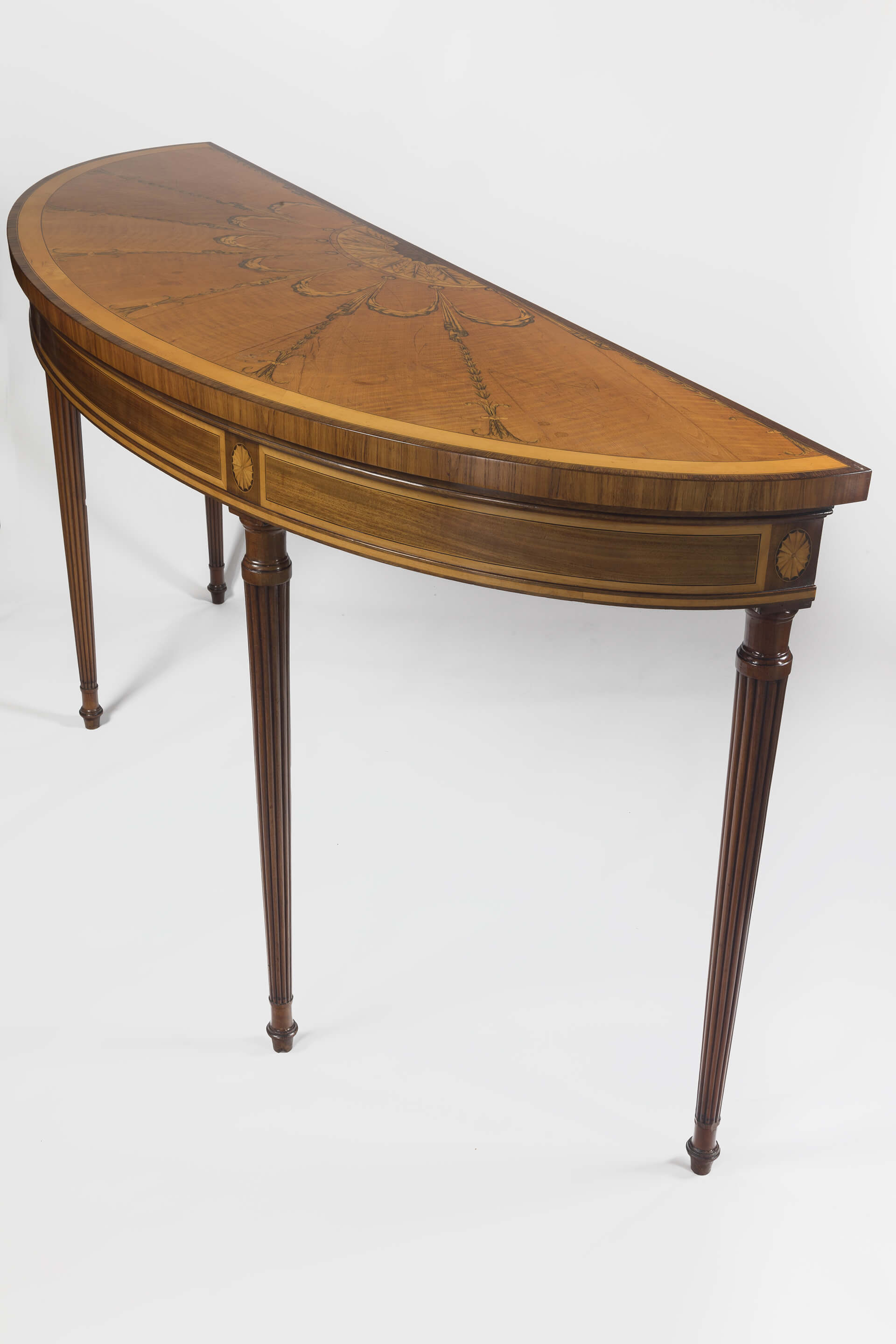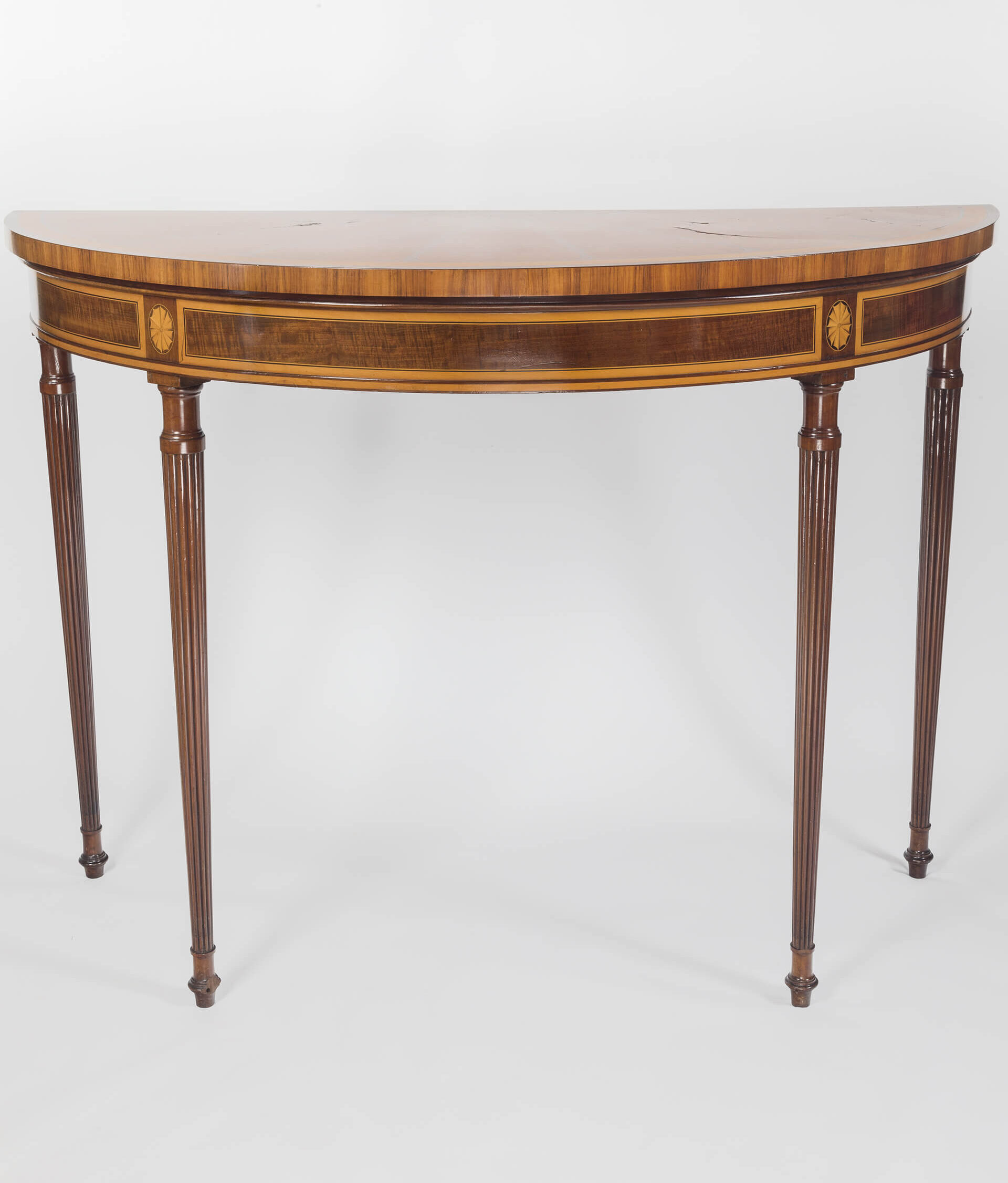
Pembroke Table
Description
A letter from Ninian Home to Haig & Chippendale dated 15th January 1789 encloses a list of furniture he wanted for his Drawing Room, with a rough floor plan attached to assist calculations. The listed articles were:
‘A Wilton Carpet; 5 Window Curtains; 2 Mahogany sophas; 10 Armed Chairs; A Neat Pembroke Table; 2 Block Screens; 2 stools for the Piers in the East front; Large covering for the carpet, Covers for the Chairs and Sofas; a Rug for the hearth’
Of this ensemble, the seat furniture, possibly the ‘Block Screen’ and the ‘Neat Pembroke Table’ survive. The Pembroke table, designed to be moved about on castors as seating arrangements required, has turned and reeded legs with collared tops that correspond exactly with the chairs and slightly later pier tables of c.1791 that were ordered in place of stools for the window piers. It is a useful piece of furniture containing a baize covered writing slide within its frieze drawer. The table seems to have been a stock item and cost £3 10s.
According to Thomas Sheraton, the table derives its name from that ‘of the lady who first gave order for one of them, and who probably gave the first idea of such a table to the workmen’. This was most likely to have been Elizabeth Herbert, Countess of Pembroke (1737-1831) whose husband Henry, 10th Earl of Pembroke, was a notable patron of Thomas Chippendale the Elder between 1759 and 1773.
Conservation treatment 2022
This Pembroke table was conserved in December 2022. The surfaces of the table were thoroughly dusted using a hogshair brush and vacuum cleaner. The length of cock-beading missing from the viewed right side of the drawer front was located inside the drawer; it was cleaned and re-glued in place using hot hide glue. A loose section of the mahogany and holly banding along the bottom edge of the table apron below the drawer was cleaned and re-glued using hot hide glue.
A poor quality and ill-matching replacement section of moulding on the side of the top of the front viewed left leg was removed and the nail used to secure it in place taken out. A replacement section, made using the same technique of the original where the central holly band is inset into a single piece of mahogany rather than sandwiched between two pieces, was made and fitted using hot hide glue. The replacement was fine finished and colour matched before being fitted. After the glue joint had set, the surfaces of the replacement moulding were polished with shellac varnish when in place.
The damaged surface finish on the table top was cleaned using very fine wire wool and a small amount of white spirit. The other surfaces were dry buffed with very fine wire wool. The finished surfaces of the table were then vigorously and repeatedly wax polished with Harrell’s Furniture Wax using a soft cotton cloth until a good surface sheen had been achieved. The runners of both the drawer and sliding writing surface were rubbed with candle wax to ease their movement.
The work revealed the truly stunning solid mahogany top which had lost its richness and depth of colour. Now the pattern can be seen showing the clever use of particular cuts of mahogany to give a multiple box shape, unlike any of the other Chippendale furniture at Paxton.



